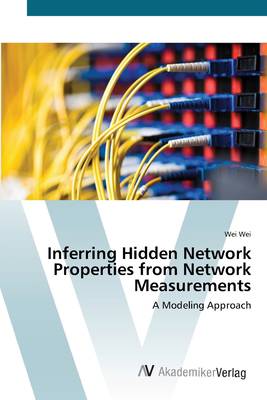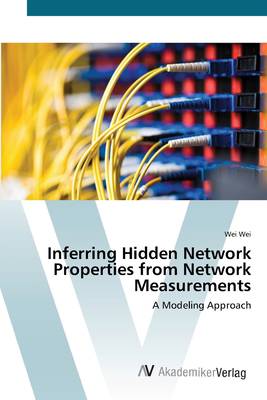
- Afhalen na 1 uur in een winkel met voorraad
- Gratis thuislevering in België vanaf € 30
- Ruim aanbod met 7 miljoen producten
- Afhalen na 1 uur in een winkel met voorraad
- Gratis thuislevering in België vanaf € 30
- Ruim aanbod met 7 miljoen producten
Zoeken
Inferring Hidden Network Properties from Network Measurements
A Modeling Approach
Wei Wei
Paperback | Engels
€ 64,67
+ 129 punten
Omschrijving
Revision with unchanged content. The Internet has grown into a tremendously large and complex system with hundreds of millions of end hosts. Because of its size, complexity and heterogeneity, understanding the Internet has proved to be very difficult. Network measurements provide valuable insight and quantitative information on network performance, management, and pathology diagnosis. This work aims to infer hidden network properties from the complex Internet by addressing the following open questions based on network measurements: (1) Can we identify the existence of a dominant congested link (i.e., a significant source of performance degradation) on an end-to-end path using only end-to-end packet delay and loss observations? (2) Can we classify an end user's access network (Ethernet, wireless LAN, cable modem, ADSL, dialup) using only measurements at a server? (3) Can we infer the extent of wireless LAN usage and identify wireless LAN traffic based on passive measurements at the edge of a large network? The key to answering the above questions is network modeling. In this book, we demonstrate how to use various network modeling techniques to solve the above challenging problems. This book is for both researchers and practitioners in the field, and graduate students who are interested in computer networks.
Specificaties
Betrokkenen
- Auteur(s):
- Uitgeverij:
Inhoud
- Aantal bladzijden:
- 140
- Taal:
- Engels
Eigenschappen
- Productcode (EAN):
- 9783639419160
- Verschijningsdatum:
- 28/05/2012
- Uitvoering:
- Paperback
- Formaat:
- Trade paperback (VS)
- Afmetingen:
- 152 mm x 229 mm
- Gewicht:
- 213 g

Alleen bij Standaard Boekhandel
+ 129 punten op je klantenkaart van Standaard Boekhandel
Beoordelingen
We publiceren alleen reviews die voldoen aan de voorwaarden voor reviews. Bekijk onze voorwaarden voor reviews.








